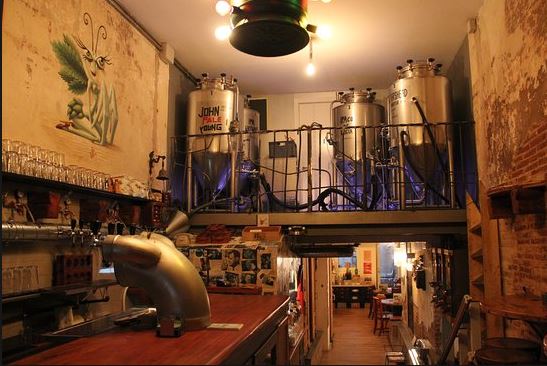Microbrewery with brewpub. A microbrewery with brewpub is a brewery that presents both on-site production that serves food. One of the main attractions, which make them popular among tourists in particular, are their beers sold at the doors of cellars or specialized bars in all cities of Italy, as well as wines produced locally from the vineyards around TuscanyWhen a brewery is more than just a place of production, it becomes a place where beer is also served and consumed in the BIG room: the brewpub.
A microbrewery with brewpub is a small craft enterprise that produces customized beers for locals and visitors. This type of establishment often has an on-site taproom, so you can enjoy your favorite beer as soon as possible!
Microbrewery with brewpub
These breweries take pride in their distinctive flavor profiles created by combining traditional ingredients in creative ways to create something new every time you taste them!
Microbrewery with brewpub
They are typically smaller than the macro breweries, but can still produce high volumes of delicious beer in different styles to suit any palate! These often contain more flavors and less sugar than larger breweries, making them ideal for those who like variety or want healthier drinks!

The new business model of craft beer was born in the United States as a brewpub, a local that produce its own beers and sold them in the pub or restaurant.
Some breweries were born to specialize on very particular styles such as sour beers or Imperial Stout and became cult breweries.
But they did not always start with the project of the attached restaurant, which would have required also “more normal” beers and a productive effort far from the “core business”.
In any case, the tap room is always provided for direct sales, and the “classic” business model of the brewpub remains the most popular for the brewery that you decide to open.
What are the reasons for this setting?
Having a direct sales channel can immediately ensure an outlet to the production of the plants, without the need to find their space in a market that can be quite crowded and competitive.
In addition, direct selling obviously allows much higher profit margins.
Selling your own beer in your own premises also has an undoubted qualitative advantage: it allows you to control a supply chain that is sold out in one place and to always offer a product that is at the peak of freshness and quality.
What are the limits and disadvantages?
Mainly the costs are higher than the investment for the production plant alone.
Setting up a brewpub means adding the expense for a real local, with cost items such as rent, kitchen, fittings and staff.
Undoubtedly these factors may have decreed the lesser luck of the brewpub model in Italy: the risks on the invested capital are greater because it can not be taken for granted, as it can happen in the United States, to find the full house.
In Italy there is a lower propensity to eat outside the home and generally to go out, for the income is lower and the places where it is more likely to gather greater success, medium-large cities, that also have higher costs.

In the United States it is quite normal to find brewpubs and generally quite busy restaurants during every day of the week and over a large time frame.
In Italy the cost of personnel for tax and social security contributions is much higher and the flexibility much lower.
A brewpub requires a lot of staff.
In the classic tap room, conceived as a place where it is only possible to drink, there is no kitchen and even the service is essential,this is done exclusively at the counter. The classic tap room times generally range from mid-afternoon to early evening.
Probably in Italy there is little habit for a fruition of this type and on these times, something that we could call something about an aperitif.
We have therefore added snacks and Tables to facilitate the management of the staff of the orders that have been equipped with an excellent management software, to reduce the expense for the commitment of staff in additional actions to service and to avoid the risk of making mistakes or oversights.
Always is recommended Ristomanager.


